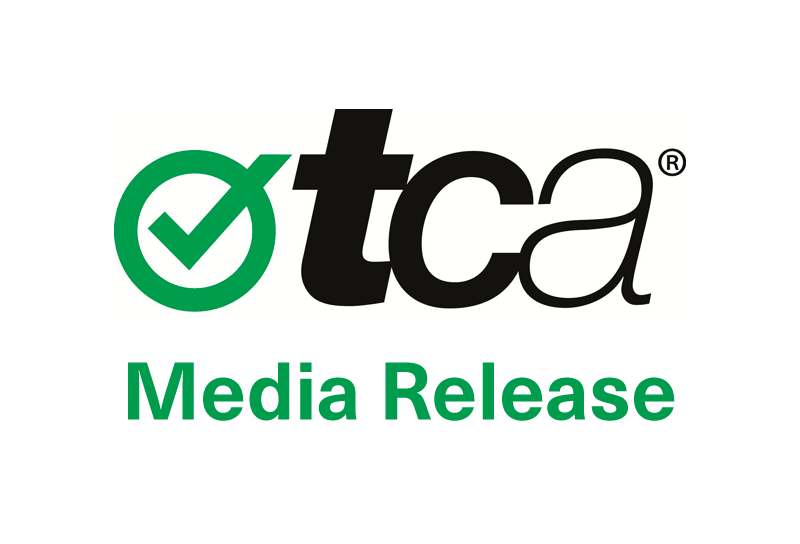TCA Constitution updated by members: reaffirms and expands TCA’s role in telematics, related intelligent technologies and co-operative intelligent transport systems (C-ITS)

Transport Certification Australia (TCA) yesterday held its Annual General Meeting, where TCA Members updated TCA’s Constitution.
TCA’s updated Constitution not only reaffirms TCA’s established role in providing assurance in the use of telematics and related intelligent technologies, but agrees to expand TCA’s role to support the emergence of connected and automated vehicles.
TCA’s Members comprise Australia’s road and transport agencies from the Commonwealth, and each State and Territory.
TCA Chairperson, Stephen Golding said, “I am pleased and heartened to receive this encouragement and support from Australia’s road and transport agencies, and the growing role they see us playing in what is becoming a rapidly changing and varied technological environment.”
“As outlined in our Strategic Plan, TCA recognises how disruptive influences of technology to transport, and how traditional roles, responsibility, public policy and government decision making, are all being challenged.”
“The growing need for governments to provide robust, sustainable and technology-based outcomes, along with promoting innovation, is driving a need for assurance in the use of telematics and related technologies.”
The purpose of TCA is to provide the following services to its Members, other government organisations and the community to support the current and emerging use of telematics and related intelligent technologies – and cooperative intelligent transport systems (C-ITS) applications – to enable public purpose outcomes through the provision of:
Advice:
This includes providing information on current and emerging opportunities and an understanding of the complex interaction of policy, technical, operational and commercial elements. TCA helps to achieve a whole of government approach in the deployment of telematics applications.
Accreditation:
This includes the development of functional and technical specifications and assessing conformance against functional, technical and business requirements. TCA also develops standards and manages government pilots, initiatives and reforms.
Administration:
This includes the type-approval of hardware and systems, certification and audit of service providers and the operational end-to-end management of programs and applications.
“Governments rely on TCA to represent their interests when developing and implementing policy reforms which depend on the use of technology,” Mr Golding said.
“Our unique ability is to help both Governments and the telematics industry to ‘get it right’ as new technology is developed – not after they go on the market.”
“By working closely with industry, standards developers and other stakeholders, TCA facilitates innovation, unlocking productivity and new sustainable business environments.”
“I acknowledge the support of our Members and other stakeholders across government, and look forward to continuing to deliver the objectives identified in our Strategic Plan, and facilitating innovation for public purpose outcomes,” Mr Golding concluded.
TCA’s Constitution details the expanded role TCA provides to its Members, other government organisations and the community.
Further details on TCA services are provided below.
TCA will provide the following services:
Advice services include:
- Enabling public purpose outcomes to be achieved through the use of Telematics* and related intelligent technologies;
- Informing TCA’s members and other government organisations on the opportunities for policy makers to advance public purpose outcomes;
- Assisting governments to gain a better appreciation of the complex interaction of policy, technical, operational and commercial elements when developing new policies and programs and revisit existing ones;
- Achieving a whole of government approach to the deployment of Telematics applications.
Accreditation services include:
- Development of functional and technical specifications;
- Assessment of conformance against functional, technical and business requirements;
- Development of standards;
- Management of government pilots, initiatives and reforms that utilise Telematics and related intelligent technologies.
Administration services include:
- Type-approval of hardware and systems;
- Certification and audit of service providers;
- The operational, end-to-end management of public purpose programs and applications which utilise Telematics and related intelligent technologies;
- For the IAP:
- manage the certification and auditing regime for the IAP;
- certify, audit and cancel the certification of IAP Service Providers;
- select and coordinate IAP Auditors;
- be a focal point for the IAP;
- undertake communication and disseminate information in the IAP;
- liaise with government authorities, end users and IAP Service Providers;
- For other programs:
manage and generally implement or operate, in a manner consistent with clauses (iv)(a) to (f) above, the implementation of such further public- purpose administration services including the certification, type-approval or other approval of providers and/or devices as the Board approve;
In addition to the above TCA will:
- Monitor and implement policy, technological, operational and commercial developments as part of the National Telematics Framework;
- Manage and generally implement and operate such public-purpose projects as the Board approve.
*Telematics means integrated systems of information, communications and sensor solutions used in:
- vehicle to somewhere;
- vehicle to vehicle;
- vehicle to infrastructure; and
- infrastructure to somewhere.
Examples include:
- Monitoring and reporting of vehicles;
- Monitoring and reporting of infrastructure;
- Providing information from and to vehicles;
- Connected and cooperative vehicles; and
- Automated and autonomous vehicles.